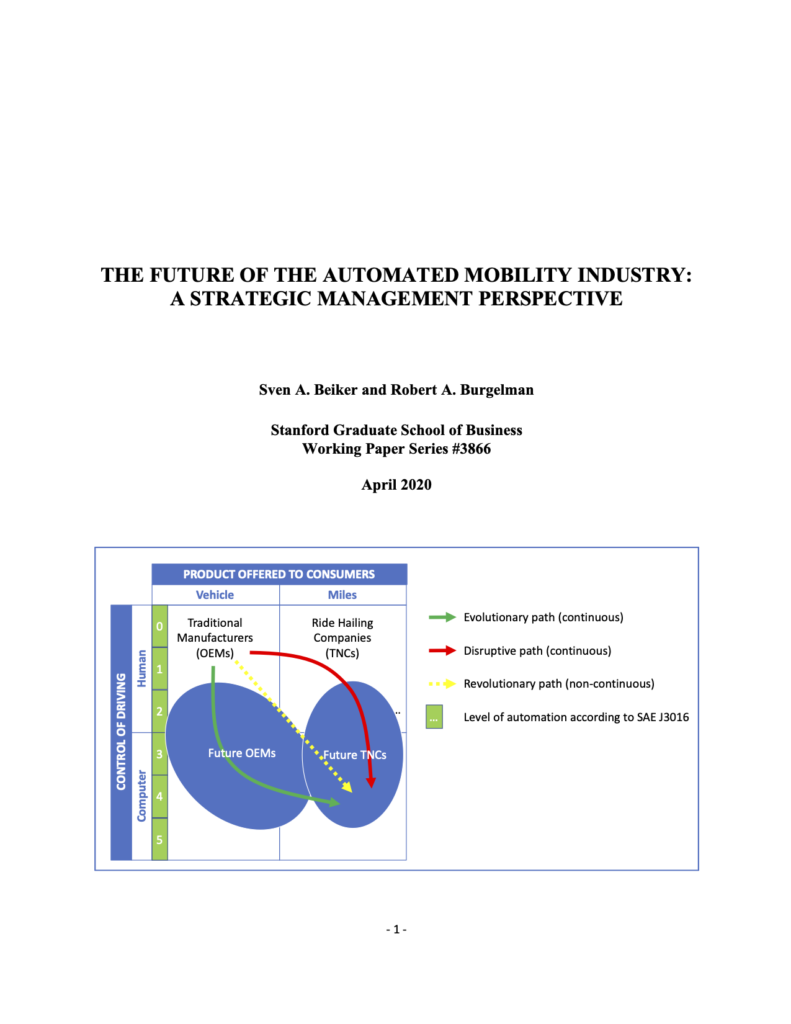I am proud to have co-authored this paper with Prof. Robert Burgelman at the Stanford University Graduate School of Business.
Our paper examines the automation and sharing aspects of the competitive dynamics of the emerging automated mobility industry. It applies strategic management, technological innovation and forecasting frameworks to examine how the different categories of industry entrants position themselves and interact with one another, and their differential chances for success.
Related to the different types of entrants it considers various criteria of success, including expected market share of vehicle sales versus miles serviced, and the number of systems, technology solutions, or licenses sold. Whether firms enter the automated mobility industry with a lateral move from an adjacent industry or as startups without preexisting experience turns out to be an important strategic distinction for predicting success.
The rate at which the industry is shifting also plays an important role because it defines how much time incumbents have to adapt to change and how much time new entrants have before their investments must begin to generate positive cash flows.Our analysis suggests that tech companies, ADAS suppliers, and startups with a welldefined focus are most likely to succeed. The paper ends with highlighting important strategic issues for further discussion with automotive industry researchers, industry analysts, and leading practitioners.
Keywords: automotive industry, automated driving, autonomous driving, autonomous vehicles, shared mobility, driver assistance, ADAS, strategy, disruption, innovation management

